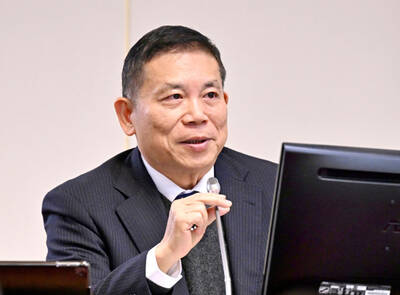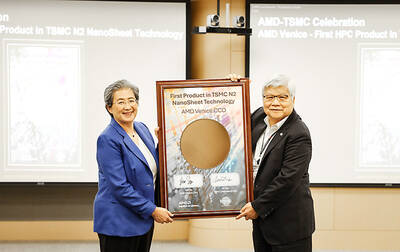Visit a mid-sized store in an Indian city, and you would wonder if it exists to make any money. It might just as well be there to process transactions for half-a-dozen payment apps: PhonePe, Paytm, Google Pay, BharatPe, Amazon Pay and MobiKwik. Add up the merchants who have downloaded the digital services and the figure quickly reaches 80 million.
One-third of India’s 60 million-plus small businesses are using an average of four different platforms, said Raman Khanduja, chief executive officer of Mintoak, a Mumbai-based fintech.
“The neighborhood shopkeepers’ bandwidth is getting sucked into accepting money,” he says. “When do they run their business?”
There are several juggling acts going on, apart from the millions of owners of small businesses reconciling their accounts across the many services that have sprung up as an alternative to cash and plastic.
The payment apps do not make any money out of this activity because they all run on a shared public utility. What they get is data that they can analyze to predict the creditworthiness of the small shops.
It is the banks that ultimately issue loans to these “thin-file” customers, but fintech controls the flow of information — and gets remunerated by the lenders for finding creditworthy merchants.
BANK QUESTION
Why have the banks let fintech get between them and all these potential clients?
Historically, depository institutions in emerging markets such as India did not see much business in democratizing cashless payments. Card readers were costly pieces of hardware and could only be deployed at shops that were well-established. These point-of-sale devices were also dumb: Even when the lenders got data about a store that was swiping a lot of cards issued by them, to advance money to a retailer based on that knowledge required multiple sales calls. It was not worth the trouble then, and makes even less sense now that India’s digital revolution has put plastic in the shade.
Credit and debit cards get swiped in two out of 10 transactions — usually for higher-value purchases and at bigger retailers.
Banks also fell behind in embracing payments on smartphones.
They do not have a tech DNA and the weight of their legacy infrastructure made their own online products clunky.
Fintech, which was far nimbler and more willing to shower generous cash-backs at early adopters, jumped on the opportunity created by India’s six-year-old Unified Payments Interface. Using this highly popular, open-source protocol, mobile apps in India move funds in real time — using phone numbers for person-to-person transfers and QR codes to settle shopping bills.
POPULAR METHOD
Nearly 2 billion such merchant transactions got done in February. The Indian government mandates that all Unified Payments Interface transactions be free of charge.
You would think that the apps, looking for ways to make money from payments, would attack the banks’ deposit-taking franchise, then. They are, actually. BharatPe part-owns a bank and is thus in a position to lure retailers to switch their current accounts. Similarly, Alphabet Inc’s Google Pay, the second most popular consumer wallet in India after Walmart Inc-owned PhonePe, is using its sway to promote fixed deposits.
WHAT’S THE POINT?
If lenders lose control of demand and time deposits, what is even the point of having a banking license?
Lending in a digital world is proving to be equally problematic. Banks are not intuitively geared to handle the unique requirements of small businesses. Suppose the salesperson for Unilever PLC’s local unit shows up at a store and says: “Since I have to meet my quarterly target, you can have another 5 percent discount if you pay upfront.”
Traditional lenders’ internal processes are too slow to clear an immediate loan like that. What is needed are pre-approved credit limits based on the borrower’s digital cash flows and innovative products such as buy-now, pay-later — but for retailers.
This is what banks have been missing out on.
Now they want to reclaim the lost ground, but can they?
Perhaps.
They would have to come in as consolidators, leveraging the trust advantage they still have over fintech, which is hobbled by its own ubiquity. Because there are already so many apps on an average shopkeeper’s phone, each service obtains only a fragment of actual sales.
WHITE-LABEL PLATFORM
“Nobody is getting enough data to offer meaningful financial services,” Khanduja says.
That is why the former Visa Inc executive, together with a couple of his colleagues, came up with the idea of Mintoak, a white-label merchant-payment platform for banks that can accept all digital payments, as well as cash and cards.
It produces a single report, leaving retailers free to run their business.
Mintoak, which works with HDFC Bank Ltd and State Bank of India, two of India’s largest lenders, earns a subscription fee and gets a cut on products that banks sell on the platform.
HDFC Bank owns 5.2 percent of the start-up.
EMERGING MARKETS
India’s success in digital finance has inspired many emerging markets to design payments along similar lines, giving Mintoak a foothold in the Middle East and the prospect of its first client in Africa.
“We want to reconnect banks with SMEs [small and medium-sized enterprises],” Khanduja says.
Payments are not the only way to tap small businesses. A vast chunk of the working capital that retailers need is embedded in the inventory. This credit used to reach them informally via distributors of brands, but it is increasingly being provided by e-commerce platforms such as venture capital-backed Udaan and billionaire Mukesh Ambani’s JioMart app for neighborhood stores.
STANDARD CHARTERED
UK-based Standard Chartered PLC has made an attempt to get into India’s business-to-business e-commerce with the hope of replicating the model in Kenya and other emerging markets.
However, most other banks would rather stick to what they know.
Luckily for them, none of the existing merchant-payment apps still has the revenue heft of a Block Inc — formerly Square Inc — in the US.
Before a dominant player emerges in the fragmented market, India’s banks need to find their way back to the cash counter.
Andy Mukherjee is a Bloomberg Opinion columnist covering industrial companies and financial services.

UNCERTAINTY: Innolux activated a stringent supply chain management mechanism, as it did during the COVID-19 pandemic, to ensure optimal inventory levels for customers Flat-panel display makers AUO Corp (友達) and Innolux Corp (群創) yesterday said that about 12 to 20 percent of their display business is at risk of potential US tariffs and that they would relocate production or shipment destinations to mitigate the levies’ effects. US tariffs would have a direct impact of US$200 million on AUO’s revenue, company chairman Paul Peng (彭雙浪) told reporters on the sidelines of the Touch Taiwan trade show in Taipei yesterday. That would make up about 12 percent of the company’s overall revenue. To cope with the tariff uncertainty, AUO plans to allocate its production to manufacturing facilities in

TAKING STOCK: A Taiwanese cookware firm in Vietnam urged customers to assess inventory or place orders early so shipments can reach the US while tariffs are paused Taiwanese businesses in Vietnam are exploring alternatives after the White House imposed a 46 percent import duty on Vietnamese goods, following US President Donald Trump’s announcement of “reciprocal” tariffs on the US’ trading partners. Lo Shih-liang (羅世良), chairman of Brico Industry Co (裕茂工業), a Taiwanese company that manufactures cast iron cookware and stove components in Vietnam, said that more than 40 percent of his business was tied to the US market, describing the constant US policy shifts as an emotional roller coaster. “I work during the day and stay up all night watching the news. I’ve been following US news until 3am

Taiwan will prioritize the development of silicon photonics by taking advantage of its strength in the semiconductor industry to build another shield to protect the local economy, National Development Council (NDC) Minister Paul Liu (劉鏡清) said yesterday. Speaking at a meeting of the legislature’s Economics Committee, Liu said Taiwan already has the artificial intelligence (AI) industry as a shield, after the semiconductor industry, to safeguard the country, and is looking at new unique fields to build more economic shields. While Taiwan will further strengthen its existing shields, over the longer term, the country is determined to focus on such potential segments as

COLLABORATION: Given Taiwan’s key position in global supply chains, the US firm is discussing strategies with local partners and clients to deal with global uncertainties Advanced Micro Devices Inc (AMD) yesterday said it is meeting with local ecosystem partners, including Taiwan Semiconductor Manufacturing Co (TSMC, 台積電), to discuss strategies, including long-term manufacturing, to navigate uncertainties such as US tariffs, as Taiwan occupies an important position in global supply chains. AMD chief executive officer Lisa Su (蘇姿丰) told reporters that Taiwan is an important part of the chip designer’s ecosystem and she is discussing with partners and customers in Taiwan to forge strong collaborations on different areas during this critical period. AMD has just become the first artificial-intelligence (AI) server chip customer of TSMC to utilize its advanced